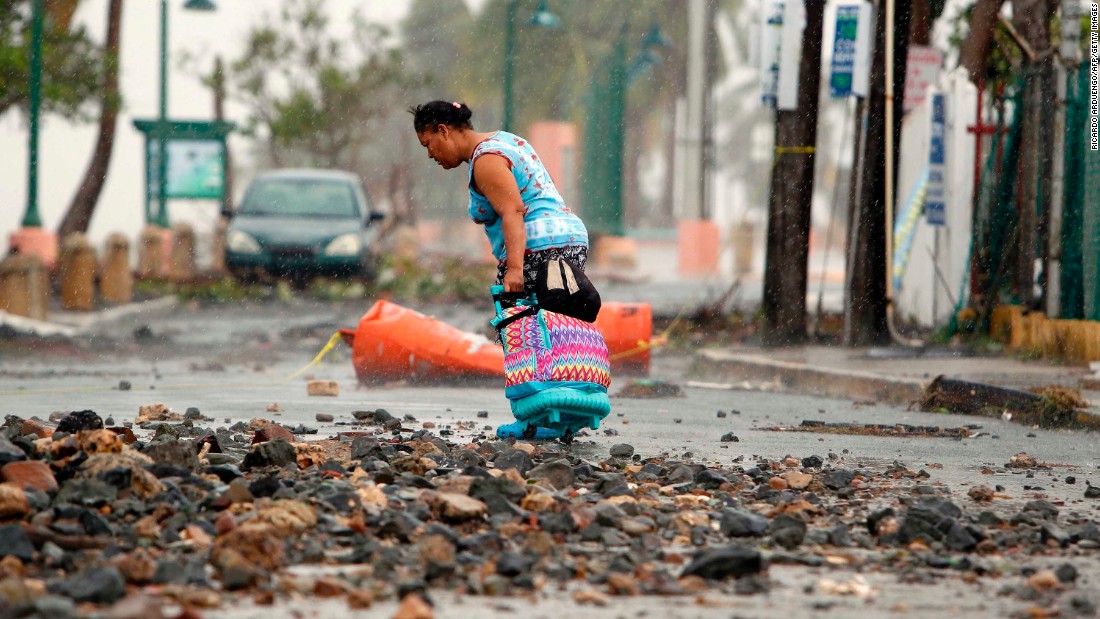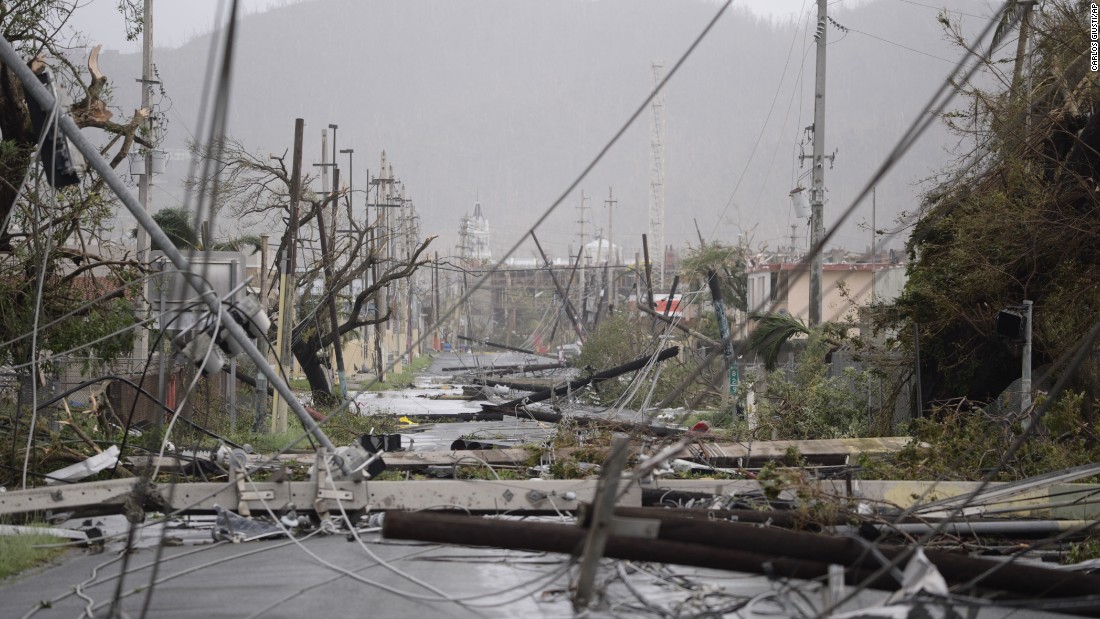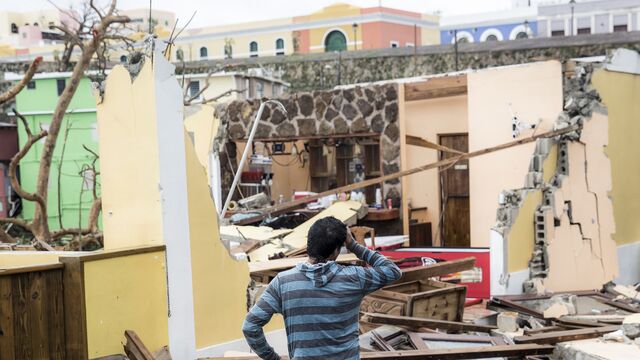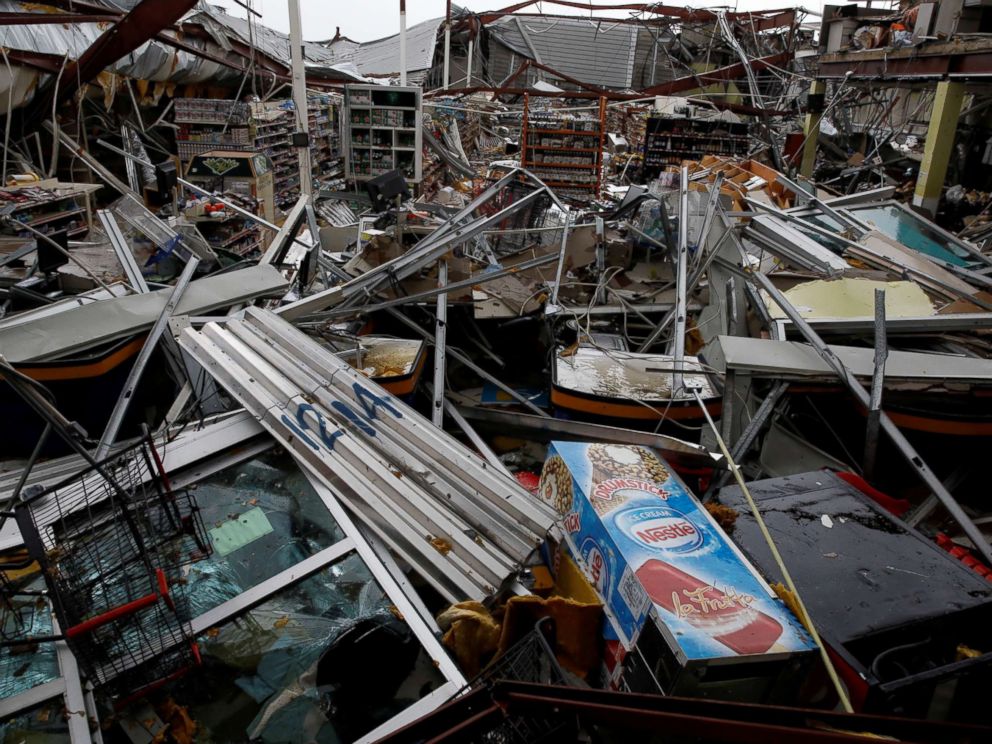Jaw
It's OVER 5,000!
57 brought this up in another thread but I think it deserves it's own. My favorite take, by a writer I read frequently, is below. As he says, substitute Connecticut every time you see Puerto Rico mentioned in the news:
http://cdrsalamander.blogspot.com/2017/09/5-days-post-maria-time-to-up-our-game.html
First of all, throw away all your “Well, the lessons learned from the Haitian earthquake tells us … “ parlor talking points.
Haiti is not Puerto Rico and the US Virgin Islands; an earthquake is not a hurricane.
The residents of Puerto Rico and the US Virgin Islands are United States citizens. They are also some of our poorest citizens.
As a data point;
- Per capita income of Connecticut: $39,373
- Per capita income of Puerto Rico: $11,241
- Per capita income of USVI: $13,139
PR and USVI are islands. There are not six lane interstates where convoys of goods can come from neighboring states before the storms even end. Everything must come by air and sea.
Look at data point above one more time.
Here was Maria’s path:
Here it is if it came by Connecticut on the same scale. You see, geographic size and population wise, CT and PR are fairly close. You can treat Martha’s Vineyard as the USVI if you wish.
Is there any question in your mind that there would be a different response if this storm hit the middle of the DC to Boston Corridor? Not just governmental, but by the media and the general public?
PR and USVI should be swamped with help and assistance to the point they are like some areas of FL earlier this month – where they say, “We have all the help we can take.”
That isn’t even close to where we are right now. Over the weekend you couldn't get away from people talking about spoiled millionaires throwing hissy-fits at each other.
No excuse. Yes, things are being done at the Federal level and in civil society - but where is the interest by the press and the people?
As you read the below, substitute every mention of Puerto Rico for Connecticut.
Hurricane Maria left a historic trail of destruction across Puerto Rico on Wednesday, its powerful winds carving holes in the walls of 300-year-old homes, flooding neighborhoods, sucking metal roofs off buildings, downing 100-year-old trees and leaving the entire island without power.
In the capital of San Juan, volunteers sprang into action, assisting stranded drivers, cutting and removing downed limbs to clear the roads. Looters also took advantage of the chaos following the storm to break into furniture stores and gas stations, running past a San Juan police car with sofas and chairs. The police car did not appear to stop.
Maria made landfall as a Category 4 hurricane packing 155-mph winds — just 2 mph short of Category 5 status — ...
“Puerto Rico isn’t going to be the same,” said Migdalia Caratini, a lawyer who lives east of San Juan. “It’s going to be before Maria and after Maria.”
The island was already reeling from Hurricane Irma, which passed the northern coast of Puerto Rico last week as a Category 5. Though Puerto Rico escaped a direct hit from Irma, the storm inflicted major damage on the electrical grid, and portions of the island had been without power even before Maria made landfall.
On Wednesday, officials from the Puerto Rico State Agency for Emergency and Disaster Management said that portions of the island could be without power for several weeks.
.....
Puerto Rico Gov. Ricardo Rossello, in a statement, called for calm and “prudence during these difficult days.” Citing the need to maintain public order, Rossello imposed a curfew for the island from 6 p.m. until 6 a.m. that will be in effect until Saturday. As night fell, most buildings in San Juan were dark, though some had generators to provide power.
...
People in this ravaged city get their drinking water from a hole poked into a fire hose attached to a street hydrant.
No one has power and they haven't heard from the outside world in four days, when Hurricane Maria barreled through here early Wednesday, smashing homes and sending walls of water through town.
Now residents here face a new peril: the Guajataca Dam, which was threatening to breach and could send more floods their way.
"Unfortunately, we're right in its path," said Kevin Azzaro, an assistant to Mayor Carlos Molina here.
.....
"The devastation in Puerto Rico has set us back nearly 20 to 30 years," said Puerto Rico Resident Commissioner Jenniffer Gonzalez. "I can't deny that the Puerto Rico of now is different from that of a week ago. The destruction of properties, of flattened structures, of families without homes, of debris everywhere. The island's greenery is gone."
.....
Large amounts of federal aid have begun moving into Puerto Rico, welcomed by local officials who praised the Trump administration's response but called for the emergency loosening of rules long blamed for condemning the U.S. territory to second-class status.
The opening of the island's main port in the capital allowed 11 ships to bring in 1.6 million gallons of water, 23,000 cots, dozens of generators and food. Dozens more shipments are expected in upcoming days.
What will they do when cholera takes root and what little fuel is outside of San Juan runs out?
I hope in the next 24 hours we hear a lot more; not just prayers and thoughts but substantial plans for a lot of help.
The dysfunction of PR pre-storm is another story, but for right now we should just focus on bringing them back to a modern society. This will take months.
Overdo it people; overdo.
Oh, and for those who want to make political hay out of this one way or another, go pound sand you blood sucking parasite.
http://cdrsalamander.blogspot.com/2017/09/5-days-post-maria-time-to-up-our-game.html
First of all, throw away all your “Well, the lessons learned from the Haitian earthquake tells us … “ parlor talking points.
Haiti is not Puerto Rico and the US Virgin Islands; an earthquake is not a hurricane.
The residents of Puerto Rico and the US Virgin Islands are United States citizens. They are also some of our poorest citizens.
As a data point;
- Per capita income of Connecticut: $39,373
- Per capita income of Puerto Rico: $11,241
- Per capita income of USVI: $13,139
PR and USVI are islands. There are not six lane interstates where convoys of goods can come from neighboring states before the storms even end. Everything must come by air and sea.
Look at data point above one more time.
Here was Maria’s path:
Here it is if it came by Connecticut on the same scale. You see, geographic size and population wise, CT and PR are fairly close. You can treat Martha’s Vineyard as the USVI if you wish.
Is there any question in your mind that there would be a different response if this storm hit the middle of the DC to Boston Corridor? Not just governmental, but by the media and the general public?
PR and USVI should be swamped with help and assistance to the point they are like some areas of FL earlier this month – where they say, “We have all the help we can take.”
That isn’t even close to where we are right now. Over the weekend you couldn't get away from people talking about spoiled millionaires throwing hissy-fits at each other.
No excuse. Yes, things are being done at the Federal level and in civil society - but where is the interest by the press and the people?
As you read the below, substitute every mention of Puerto Rico for Connecticut.
Hurricane Maria left a historic trail of destruction across Puerto Rico on Wednesday, its powerful winds carving holes in the walls of 300-year-old homes, flooding neighborhoods, sucking metal roofs off buildings, downing 100-year-old trees and leaving the entire island without power.
In the capital of San Juan, volunteers sprang into action, assisting stranded drivers, cutting and removing downed limbs to clear the roads. Looters also took advantage of the chaos following the storm to break into furniture stores and gas stations, running past a San Juan police car with sofas and chairs. The police car did not appear to stop.
Maria made landfall as a Category 4 hurricane packing 155-mph winds — just 2 mph short of Category 5 status — ...
“Puerto Rico isn’t going to be the same,” said Migdalia Caratini, a lawyer who lives east of San Juan. “It’s going to be before Maria and after Maria.”
The island was already reeling from Hurricane Irma, which passed the northern coast of Puerto Rico last week as a Category 5. Though Puerto Rico escaped a direct hit from Irma, the storm inflicted major damage on the electrical grid, and portions of the island had been without power even before Maria made landfall.
On Wednesday, officials from the Puerto Rico State Agency for Emergency and Disaster Management said that portions of the island could be without power for several weeks.
.....
Puerto Rico Gov. Ricardo Rossello, in a statement, called for calm and “prudence during these difficult days.” Citing the need to maintain public order, Rossello imposed a curfew for the island from 6 p.m. until 6 a.m. that will be in effect until Saturday. As night fell, most buildings in San Juan were dark, though some had generators to provide power.
...
People in this ravaged city get their drinking water from a hole poked into a fire hose attached to a street hydrant.
No one has power and they haven't heard from the outside world in four days, when Hurricane Maria barreled through here early Wednesday, smashing homes and sending walls of water through town.
Now residents here face a new peril: the Guajataca Dam, which was threatening to breach and could send more floods their way.
"Unfortunately, we're right in its path," said Kevin Azzaro, an assistant to Mayor Carlos Molina here.
.....
"The devastation in Puerto Rico has set us back nearly 20 to 30 years," said Puerto Rico Resident Commissioner Jenniffer Gonzalez. "I can't deny that the Puerto Rico of now is different from that of a week ago. The destruction of properties, of flattened structures, of families without homes, of debris everywhere. The island's greenery is gone."
.....
Large amounts of federal aid have begun moving into Puerto Rico, welcomed by local officials who praised the Trump administration's response but called for the emergency loosening of rules long blamed for condemning the U.S. territory to second-class status.
The opening of the island's main port in the capital allowed 11 ships to bring in 1.6 million gallons of water, 23,000 cots, dozens of generators and food. Dozens more shipments are expected in upcoming days.
What will they do when cholera takes root and what little fuel is outside of San Juan runs out?
I hope in the next 24 hours we hear a lot more; not just prayers and thoughts but substantial plans for a lot of help.
The dysfunction of PR pre-storm is another story, but for right now we should just focus on bringing them back to a modern society. This will take months.
Overdo it people; overdo.
Oh, and for those who want to make political hay out of this one way or another, go pound sand you blood sucking parasite.








